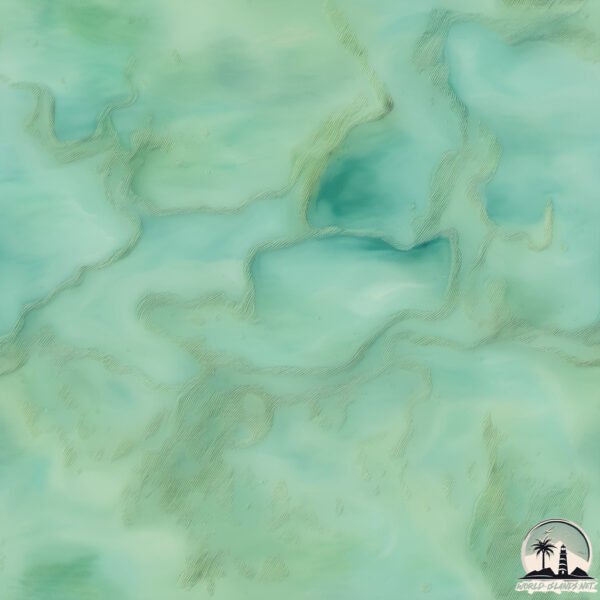Pulua Evans

Welcome to Pulua Evans, a Tropical island in the Sulu Sea, part of the majestic Pacific Ocean. This guide offers a comprehensive overview of what makes Pulua Evans unique – from its geography and climate to its population, infrastructure, and beyond. Dive into the details:
- Geography and Size: Explore the island’s size and location.
- Climate and Weather: Weather patterns and temperature.
- Topography and Nature: Uncover the natural wonders of the island.
- Infrastructure and Travelling: Insights on reaching, staying, and making the most of your visit.
- News and Headlines: Latest News.
Geography and size of Pulua Evans
Size: 7.419 km²
Coastline: 14 km
Ocean: Pacific Ocean
Sea: Sulu Sea
Continent: Asia
Pulua Evans is a Small Island spanning 7.4 km² with a coastline of 14 km.
Archipel: Greater Sunda Islands – A group of large islands in Southeast Asia, including Borneo, Sumatra, Java, and Sulawesi, known for their rich biodiversity and cultural diversity.
Tectonic Plate: Sunda – Extends across Southeast Asia, encompassing parts of the Sunda Shelf, known for its interaction with the Australian Plate, contributing to volcanic activity in Indonesia.
The geographic heart of the island is pinpointed at these coordinates:
Latitude: 5.38844184 / Longitude: 118.92383123
Climate and weather of Pulua Evans
Climate Zone: Tropical
Climate Details: Tropical Rainforest Climate
Temperature: Hot
Climate Characteristics: This climate is typified by heavy rainfall throughout the year, high humidity, and consistently high temperatures, leading to lush rainforests and rich biodiversity. Seasonal temperature variations are minimal.
Topography and nature of Pulua Evans
Timezone: UTC+08:00
Timezone places: Australia/Perth
Max. Elevation: 10 m
Mean Elevation: 6 m
Vegetation: Mangrove Forest
Tree Coverage: 80%
The mean elevation is 6 m. The highest elevation on the island reaches approximately 10 meters above sea level. The island is characterized by Plains: Flat, low-lying lands characterized by a maximum elevation of up to 200 meters. On islands, plains are typically coastal lowlands or central flat areas.
Dominating Vegetation: Mangrove Forest
Found in coastal areas and river deltas, these unique wetland ecosystems are adapted to saline conditions and are crucial for coastal protection and biodiversity. Pulua Evans has a tree cover of 80 %.
Vegetation: 2 vegetation zones – Low Diversity Island
Islands with two distinct vegetation zones offer slightly more ecological variety. These zones could be due to differences in elevation, moisture, or other environmental factors. While still limited in biodiversity, these islands may offer a contrast between the two zones, such as a coastline with mangroves and an inland area with grassland.
Infrastructure and Travelling to Pulua Evans
Does the island have a public airport? no.
There is no public and scheduled airport on Pulua Evans. The nearest airport is Tomanggong Airport, located 27 km away.
Does the island have a major port? no.
There are no major ports on Pulua Evans. The closest major port is BAKAPIT, approximately 60 km away.
The mean population of Pulua Evans is 37 per km². Pulua Evans is Gently Populated. The island belongs to Malaysia.
The name of the island resonates across different cultures and languages. Here is how it is known around the world: Arabic: بورنيو; German: Borneo; Spanish: Isla de Borneo; French: Bornéo; Portuguese: Bornéu; Russian: Калимантан; Chinese: 婆罗洲
Continuing your journey, Sakar is the next notable island, situated merely km away.
Hardest blox fruits islands to grind



Malaysia is classified as Developing region: Regions characterized by lower income levels, with economies in the process of industrialization and modernization. The level of income is Upper middle income.
News – Latest Updates and Headlines from Pulua Evans
Stay informed with the most recent news and important headlines from Pulua Evans. Here’s a roundup of the latest developments.
Please note: The data used here has been primarily extracted from satellite readings. Deviations from exact values may occur, particularly regarding the height of elevations and population density. Land area and coastline measurements refer to average values at mean high tide.
